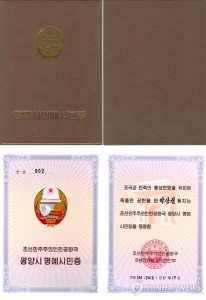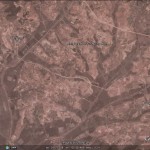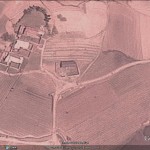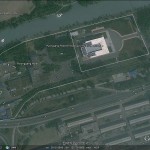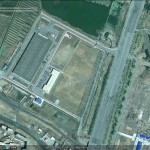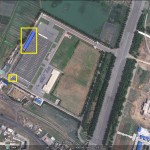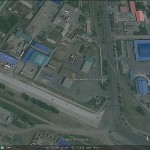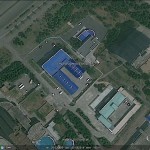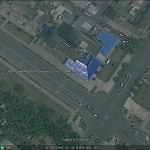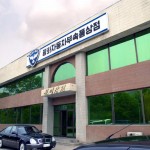Institute for Far Eastern Studies (IFES)
2013-5-30
North Korea currently under robust international sanctions has put on extensive advertising campaign for the recent International Product Exhibition [Spring International Trade Fair] held in Pyongyang.
A week has passed since the 16th Pyongyang International Spring Product Exhibition (May 13-16), but the Choson Sinbo, the bulletin of the Japan-based Chosen Soren, continues to run daily articles on the products displayed in the exhibition.
The products displayed at the Pyongyang International Spring Product Exhibition, which is North Korea’s largest trade exhibition, provided a peak at the country’s current industrial trends. Moreover, this year’s exhibition introduced a number of products which are used in the daily lives of North Koreans.
The (North) Korean United Trading Company exhibited over fifty categories of products including colored metal products and a variety of lubricants and ball bearings. Groups including the Sungri Economic Trade Alliance, the State of the Art Technology Development and Exchange Center, the (North) Korean Hard Glass Company, the Pyongjin Bicycle Joint Venture Company, etc. entered products which contribute to improving the lives of North Koreans. The Chosun Sinbo introduced various new products displayed at the exhibition, including shoes was introduced which treats athlete’s foot and dissipates odors with substances such as nano silver as well as complex lactic acid products and other pharmaceutical products made at the Pyongchon Koryo Pharmaceutical Factory.
North Korea also focused on advertisement for automobiles and electronics. Pyonghwa Motors introduced over 30 new models at the exhibition, with the increase in demand. It also boasted that the new models were equipped with lower fuel consumption, reduced by two-thirds.
North Korean media also praised computer products introduced by the (North) Korean Computer Center for its rise in popularity and international competitiveness. The Ryongak Computation Information and Technology Exchange Center introduced a new tablet PC which it dubbed the ‘Yongheung.’ It was reported that buyers welcomed the site for portable profile projectors which had TVs for viewing and allowed for comfortable exhibition of mass media materials.
To overcome the current international sanctions imposed on North Korea, the exhibition is likely to be intended to increase its economic cooperation with the outside world. On May 22, the Chosun Sinbo reported that despite the United States-led economic sanctions on North Korea, many foreign enterprises participated in the exhibition in the hopes of expanding trade with North Korea. It highlighted that the Rason Comet Trade Corporation which is located in China and North Korea’s joint Rason Special Economic District, participated this year for the first time in the Pyongyang International Spring Merchandise Exhibition. The article explained that the Rason Comet Trade Corporation is exporting clothing including t-shirts and athletic wear to Indonesia, Thailand, China, etc. Pyonghwa Motors which exhibited 36 varieties of cars, passenger vans, and buses at the outdoor exhibition center, benefited from meetings with several foreign companies as well as North Korean trade and economic agencies.
The 16th annual Pyongyang Spring Product Exhibition was held from the 13th to 16th of this month and companies from North Korea, Germany, Malaysia, Mongolia, Switzerland, Singapore, Australia, Italia, Indonesia, China, Poland, and Taiwan participated at the event with various products including machineries, electronics, light industry, foods, medical, and chemicals.

